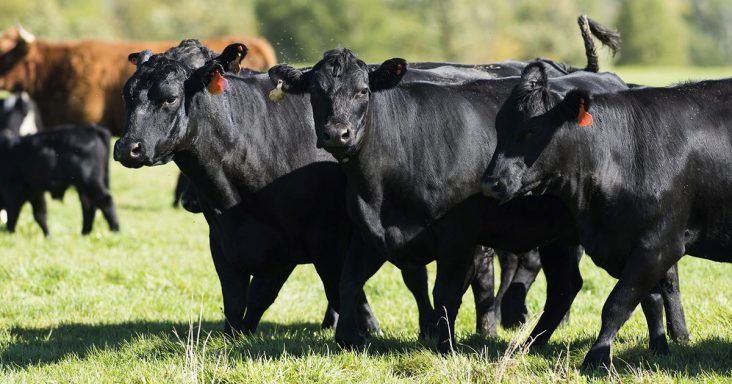Live cattle prices at an all-time high
by July 8, 2024 1:30 pm 442 views

High live cattle prices are pushing beef production down and pushing retail beef prices higher during the summer grilling season. Cattle prices were at an all-time high at mid-year, according to Derrell Peel, livestock marketing specialist with Oklahoma State University Extension.
Peel reports fed steers averaged $195.81 per hundredweight, with large steers priced at $255.41 per hundredweight at auctions before July 4. He said high live weight prices have pushed beef production down 1.6% from the same six-month period a year ago. Steer slaughter is down 1.7% and heifer slaughter is down 1.5% from a year ago. Peel said higher steer and heifer carcass weights are more than offsetting the modest decreases in slaughter.
Wholesale choice boxed beef prices are equal to one year ago at $328.96 in early July. Peel said wholesale prices for popular grilling steaks are strong at midyear increasing the demand for ground beef and pushing those prices to record levels. Peel said the 83.3% lean ground beef hit a wholesale record price of $3.26 per pound in early July.
Retail beef prices remain elevated but retailer promotions have eased the full sting. The U.S. Department of Agriculture (USDA) reports that ground beef 90% lean retailed at $5.88 a pound, up from $5.13 a year ago. Ground chuck, typically 85% lean, sold for $4.56 per pound last week, slightly cheaper than a year ago as retailers lowered prices for the July 4 holiday.
Round steak prices are $7.55 per pound, up 16.69% from a year ago. New York Strip steak cuts sold at $12.84 a pound last week, up 18.77% from a year ago. Fattier cuts like rib-eye steak prices are up 4.73% to $12.62 per pound compared to a year ago. Roast prices are also elevated with rump cut prices up 13.75%, and chuck cut prices up 8.88% from a year ago, according to the USDA National Retail Beef Report from July 5.
Peel said June 1 feedlot inventories were equal to one year ago.
“Feedlot inventories have been stubbornly slow to decrease with annual average monthly feedlot inventories down just 2.2% since the peak level 21 months ago in Sept 2022. Feedlot placements are declining but feedlot inventories remain high due to more days on feed and continued large heifer slaughter rates. The strong heifer slaughter suggests that little, if any, heifer retention for herd rebuilding has begun,” Peel said.
Tyson Foods CEO Donnie King recently said the beef industry has not yet started to rebuild the herd and supply fundamentals will continue to tighten for the remainder of this year and beyond. Tyson has forecast its beef production to be down this year amid tight cattle supplies and reduced packer margins. Tyson expects its beef segment will post an operating loss between $100 million to $400 million for its fiscal year ending Oct. 1.
Peel said beef production will likely finish the year down between 3% and 3.5% from last year, more than the 2% decline forecasted earlier this year.
“Feedlot inventories and cattle slaughter will continue to decline, perhaps faster if heifer retention begins in a significant way. Baring outside shocks, cattle prices will remain at record levels and push even higher if herd rebuilding begins in the coming months,” Peel said.
